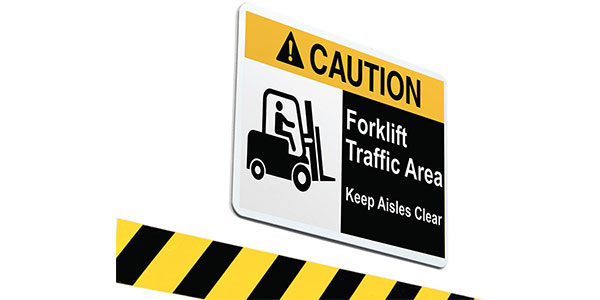Vital signs

At International Paper's manufacturing operation in Courtland, Ala., logs enter the building at one end and come out the other in the form of large paper rolls and cases of 8 1/2- by 11-inch paper. It takes trained workers and specialized machinery to keep the pulp and paper flowing in the highly automated operation. But as in most manufacturing plants, things can go wrong. That's why the company makes employee safety a priority.
"It's the most important facet of our business. Without our people being well, we could not run properly," says Tim Agee, who recently retired after 10 years as safety manager of the plant.
Most employers would agree with Agee that their people are their most important asset. Finding good workers is never easy. And when you factor in recruiting and training costs, workers represent a significant investment for employers. Protecting them from injury and lost days is vital to good performance. Most importantly, it is the right thing to do as an employer. That's why it's essential to keep workers informed of safety procedures—first with good training, and then through proper signage and labeling that reinforce safe practices.
SAFE WAY
Safety programs save lives. According to Occupational Safety and Health Administration (OSHA) statistics, workplace fatalities have dropped by more than 65 percent since 1970, while occupational injuries and workplace-related illnesses have declined by 67 percent. Most of this is due to regulations and safety programs that are deployed in workplaces, including the use of proper signage and safety labeling.
OSHA and other federal and state agencies set requirements for most of the safety signage found in a warehouse. The OSHA website (www.osha.gov) is a good resource on regulations. But local jurisdictions also have a say in creating safe work environments. For instance, local fire inspectors are typically charged with assuring that exits are clearly marked, directions to storm shelters are posted, and the locations of fire extinguishers and eyewash stations are clearly identified.
Local requirements can vary greatly, which tends to create headaches for companies that operate facilities in multiple locations. "It is important for managers to know the regulations [that apply to] the dirt under their feet," says Paul Burgess, regulatory specialist at Labelmaster, a company that provides safety labels and related products. "People think they have their ducks in a row, but then are surprised when the local inspectors show up and [tell them] they are not compliant."
Burgess notes that a wealth of material on fire, electrical, and building safety, including hazard marking and signage, can be found on the National Fire Protection Association's website (www.nfpa.org). Most fire departments use NFPA standardized codes as the basis for their own local codes, but individual requirements may vary. For that reason, it's wise to check with your local fire department to see how closely it follows NFPA guidelines and what other codes may be in force.
SIGN LANGUAGE
As for what kinds of signs companies use, Jeff Tanner, vice president of risk management at Kenco, a third-party logistics company, says the signs posted in his company's facilities fall into three basic categories: danger signs, caution signs, and safety instruction signs.
Danger signs warn of conditions that can cause serious harm or even death, such as exposure to high-voltage electricity. Caution signs warn against other possible threats, such as a hot surface or a conveyor that could start without warning. Safety instruction signs provide directions on where people should go in case of emergency or the proper use of a piece of equipment.
"As an advocate of safety, we have to go out and look for areas where we need to develop signs to assure safety," says Tanner. "For instance, we might place a sign near our dock doors that states, 'Jumping from dock doors is prohibited, use the pedestrian door.'"
Other signs might identify areas in which propane fuel is in use, "no smoking" areas, low clearances, or zones where lift trucks are prohibited from entering.
Agee reports that signs play a major role in assuring safety at the International Paper plant. "Every door you go through tells if forklift traffic is on the other side," he says. "Being in 'tornado alley,' there are also signs to direct people to storm shelters."
As for the signage itself, today's signs (which can be bought ready-made from suppliers or created in-house) are just as likely to feature symbols as the traditional text. In fact, symbol signs are growing in use and are required in some instances. Research confirms that people respond faster to graphics, known as pictograms, than to text. "Pictograms improve sign recognition from a distance, well before text is legible," says Jack Rubinger of Graphic Products, a supplier of industrial label printers for safety, productivity, and compliance programs.
We've all seen these symbol-laden signs before: A picture of a person walking with a line drawn through it means "Don't walk here." A pictogram of safety glasses in a battery changing room reminds workers to wear eye protection. A symbol of a horn blowing warns lift truck drivers to hit their horn when approaching a blind corner.
Good signage and labeling are especially important for facilities that experience high turnover, rely heavily on temp workers, or have a lot of visitors. And at warehouses where English is not the first language for a majority of workers, pictograms are essential.
While the primary purpose of signs in facilities is to promote safe practices, good signage can also yield other benefits.
"The [main] reason to use signs is to promote safety, but they can also [improve] workflow," says Barry Alves, label systems consultant at Peak-Ryzex, a systems integration company that also provides labeling solutions. He says that while good signage saves on lost employee workdays, the return on investment from productivity increases alone can be as short as six to eight months.
"The signs can tell people where to be, where not to be, and how to go. It gives them a workflow pattern and process that they can follow," Alves says.
Another way to accomplish that is through floor markings. Some operations mark travel lanes for facility vehicles (and include stop-sign warnings at major intersections to reduce the chance of accidents), while others use floor markings to identify designated pedestrian lanes, where workers and visitors can walk safely away from forklift traffic.
Among the companies that use floor markings to denote pedestrian lanes is Kenco. "We train our people to stay in the lanes [wherever possible], as the lift truck drivers look for you to be there," says Tanner. He adds that some sites mark the pedestrian lanes with large footprints to further indicate where people should walk.
STICK WITH IT
In addition to proper signage, many regulations require specific labeling. Again, OSHA, NFPA, and your local fire department can provide details on what's required. If your facility uses or distributes hazardous chemicals (and just about all do, as the definition is broadly interpreted), you're required to mark them according to the Globally Harmonized System (GHS), a worldwide standard for the classification and marking of chemicals.
"GHS requires distributors to label containers that they are shipping," says Labelmaster's Burgess. "For instance, a case of paint may contain six cans," he says. "The paint cans inside the carton are required to have the hazard standard (GHS) labeling applied to them. The shipping case may also require other markings, but not necessarily GHS labels. Many facilities also may require certain signage where chemicals are stored within the facility."
Many of the markings are placed on these products at the point of manufacture. However, if they're not, you're still responsible for making sure they're marked properly when in your facility and for shipments that you initiate.
In addition to product markings, other labels must be placed on facility infrastructure to alert workers to hazards. According to Graphic Products, the six most common types of safety labels used in industrial facilities are arc flash labels, used in electrical panels to warn of shocks, burns, or possible electrocution; lockout/tag out tags, which assure that machinery is shut down when someone is performing maintenance or other operations; wire and cable marking labels, which identify the types, locations, and functions of the cables used in machinery and communications; pipe and valve marking labels, which let workers know what the pipes are carrying, the direction of flow, and any hazardous materials they might contain; and fire safety and exit signs that show workers where to go in case of emergency.
The International Paper facility, for instance, has a large number of pipes that carry water, steam, oil, and chemicals. "We labeled every pipe we could, on both sides of a wall they go through," says Agee.
Labels can also be placed on material handling equipment to promote safe operation. Many equipment manufacturers include warning and cautionary labels with the systems they provide. But in addition to these, facilities may want to provide instructional labels that encourage operators to use the equipment properly. For instance, a label might direct a lift truck operator to exchange a battery once it drains to a certain power level in order to maintain efficient performance.
The International Paper facility also uses labels to promote safe behaviors. "People know what they can and cannot do there. There isn't any doubt [as to] what is expected," says Agee. "If the maximum lifting [limit] is 50 pounds, there is a label to show that. Safety is number one; that's for sure."
Each facility should have a safety manager who is charged with understanding what signs and labels are needed for compliance as well as providing the informational signs that can boost productivity and efficiency. Good signage and labeling programs do more than just promote safe practices—they instill habits that can assure that a company's most important assets are well protected.
Related Articles

Copyright ©2024. All Rights ReservedDesign, CMS, Hosting & Web Development :: ePublishing